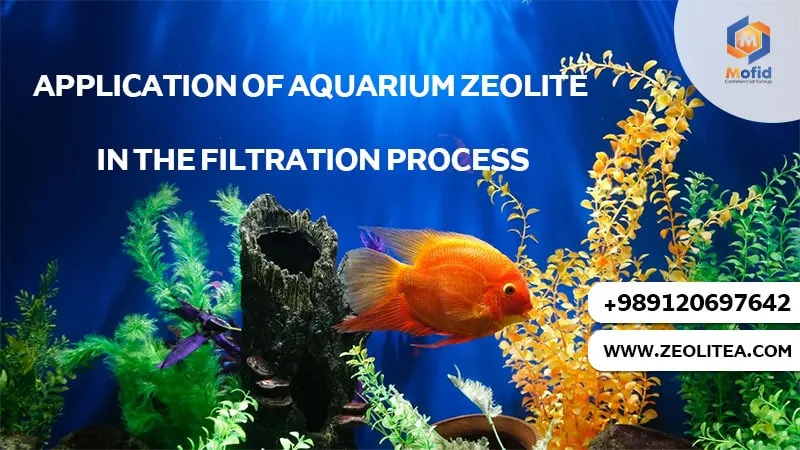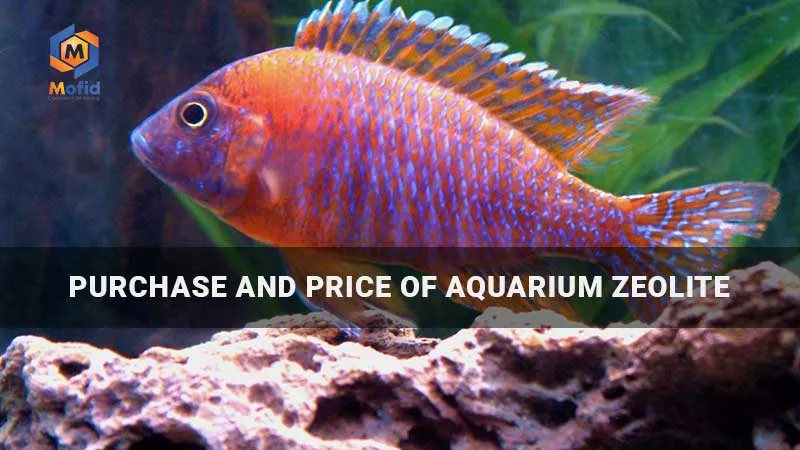What is Aquarium Zeolite?
Aquarium zeolite is a natural mineral with a porous crystalline structure used as a natural filter or absorbent in aquatic systems like aquariums. Due to its components, such as silica and aluminum, aquarium zeolite has a high capacity to absorb and retain harmful toxins and substances, including ammonia, nitrates, and heavy metals. This natural material helps create a healthy and stable environment for aquarium fish and plants.
Since maintaining water quality in aquariums is crucial, using zeolite in aquariums is one of the best ways to ensure water health and clarity.
Why should we use zeolite in aquariums?
Zeolite Powder
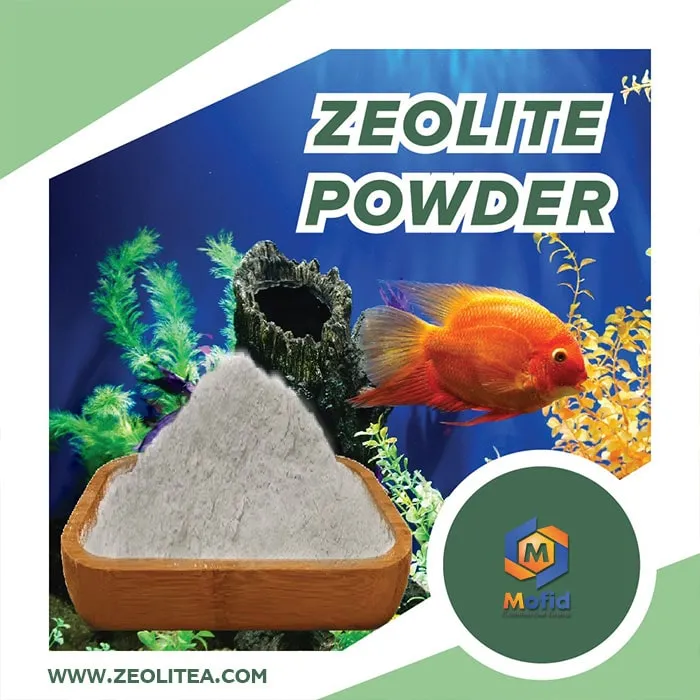
Aquaculture-specific zeolite used in aquariums can absorb harmful substances such as ammonia from the water, preventing harm to fish and other aquatic creatures. Zeolite in aquariums also acts as a powerful absorbent, attracting oxygen from the air and introducing it into the aquarium water.
Aquarium zeolite is very effective in maintaining the cleanliness and quality of aquariums. This is part of an essential process called filtration. Fish can thrive in clean, filtered water. Zeolite, as a mineral, enhances the water filtration performance in aquariums. Zeolite acts as a filter layer whose function in water filtration surpasses that of carbon or sand filters. Additionally, it is a naturally sourced product.
Zeolite is composed of minerals and crystals with high ion exchange capacity. By analyzing its internal structure, one can see small channels about 0.5 nanometers in diameter, making it a porous material ideal for water purification. Zeolite can eliminate contaminants suspended in the water, keeping the aquarium entirely clean.
This structure consists of multiple parts with larger pores. These pores can hold suspended particles, such as organic elements like ammonia, which can degrade water quality.
When zeolite is placed in water, it removes ammonia and traps it in its porous structure. Ammonia is extremely toxic to fish, and using zeolite to remove it is an effective way to reduce its levels in the water. Zeolite’s ability to absorb ammonia is limited, and once saturated, it can be recharged using a simple water and salt solution. This exchange of ammonia with sodium allows zeolite to absorb ammonia again. This recharge process can be repeated several times until the zeolite becomes blocked and unusable.
Zeolite is commonly used in fish transport bags or tanks to prevent the accumulation of ammonia and the environment from becoming toxic. This is its most common application. Besides removing ammonia, zeolite can be used to polish and clarify water by removing unwanted particles.
Never use salt in an aquarium containing zeolite, as it will release all the ammonia absorbed by the zeolite back into the aquarium, potentially killing your aquatic life.
Filter Media Structure
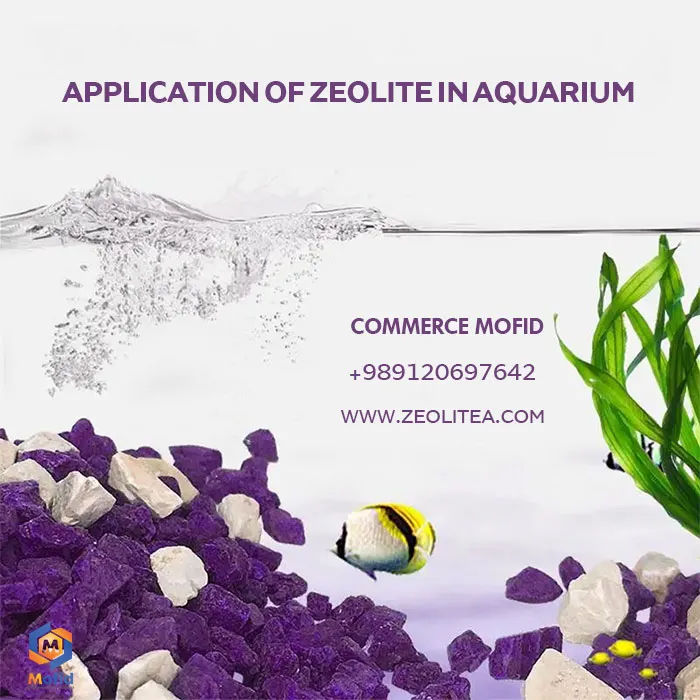
Understanding the effectiveness of zeolite depends on the type of aquarium you have.
Calcium-exchange zeolites can absorb ammonia compounds, which is relevant in freshwater aquariums. In saltwater aquariums, the situation is quite different due to the higher calcium content. In such environments, zeolite acts as a biologically microporous substrate. Additionally, it can concentrate a large number of bacteria on its surface, which quickly convert ammonia to nitrite and nitrite to nitrate. In this case, the interior of the zeolite has very low oxygen concentrations.
How to Maintain Aquarium Zeolite Aquarium zeolite deteriorates and loses its effectiveness over time as bacteria colonies grow to the point of blocking its surface pores. Once clogged, the filtration capacity of zeolite decreases to the point where it can no longer function properly.
Thus, zeolite requires maintenance. Once it begins to fail during the water filtration process, it should be replaced.
When using zeolite for filtration in an aquarium, it’s recommended to introduce it gradually. Never start filtration with the full load of zeolite, as its powerful filtration capabilities may affect fish that are already accustomed to certain conditions in the aquarium.
Most zeolite manufacturers recommend slow and gradual installation over a week, allowing the fish to adapt to the new water quality. Over time, bacteria will thrive, and their activity will peak, causing a significant decrease in oxygen in the aquarium. This happens due to the bacteria’s high oxygen consumption.
Applications of Zeolite in Aquariums:
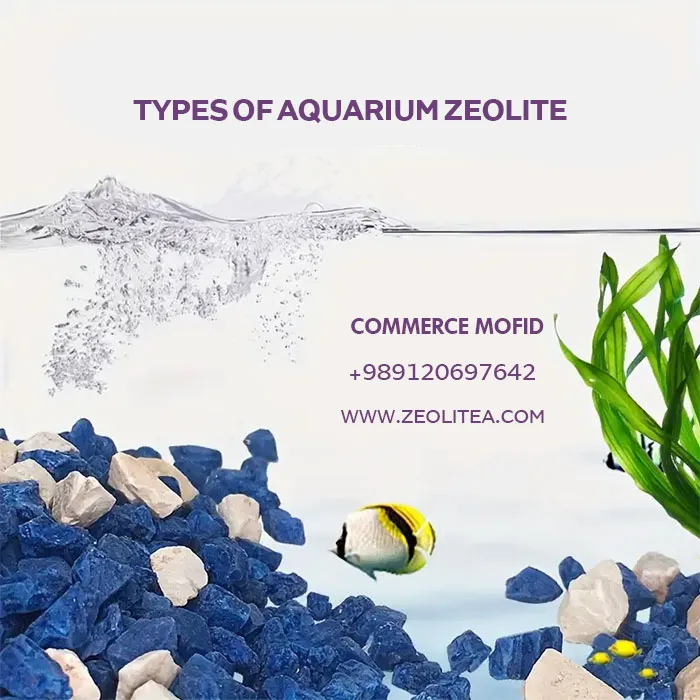
- Absorbing and eliminating toxins and harmful substances from water
- Supporting the health of aquatic creatures
- Providing oxygen to aquarium water
- Zeolite stones decorate the aquarium environment, giving it a natural appearance
Zeolite’s Efficiency in Fish Farming
In fish farming environments with high organic loads, pollution increases due to the accumulation of toxins, necessitating rapid water purification. Zeolite can be reused multiple times after several filtration cycles.
- Zeolites provide a suitable environment for bacteria growth, helping them balance NH3 fluctuations.
- Zeolite affects ammonia and phosphate concentrations, absorbing ammonia and reducing phosphate deposition.
- Zeolite enriches the nutrients in fish farming ponds, increasing the nutritional value of collected fertilizers.
- Zeolite acts as a buffer to regulate pH fluctuations in aquatic environments.
- Zeolite reduces ammonia concentrations throughout the farming period in fish ponds.
- Using zeolite in fish farming increases production quality and reduces mortality.
- Zeolite is cost-effective and easy to use for reducing ammonia and boosting production. It is recommended to use zeolite alongside water changes, aeration, and pumping.
- Zeolite absorbs heavy metals, reducing the risk of poisoning.
- Zeolites can absorb fungal toxins, especially aflatoxins, thanks to their high ion-exchange capacity, abundant pores, and weak gel formation ability.
- Mixing 2-3% zeolite with fish feed improves digestion and absorption, leading to better growth and reproduction.
- By absorbing ammonium ions, zeolite allows for denser aquaculture, breeding, and transportation.
- Zeolite acts as a filter, improving water quality in fish farming environments.
Direct Purchase of Zeolite from Producers
To buy zeolite directly from the producer, identify sales companies and production centers. Purchasing aquarium zeolite directly from producers cuts out intermediaries, making it a cost-effective option. Many companies are involved in processing and producing zeolite and are ready to sell and fulfill bulk and retail orders quickly.

